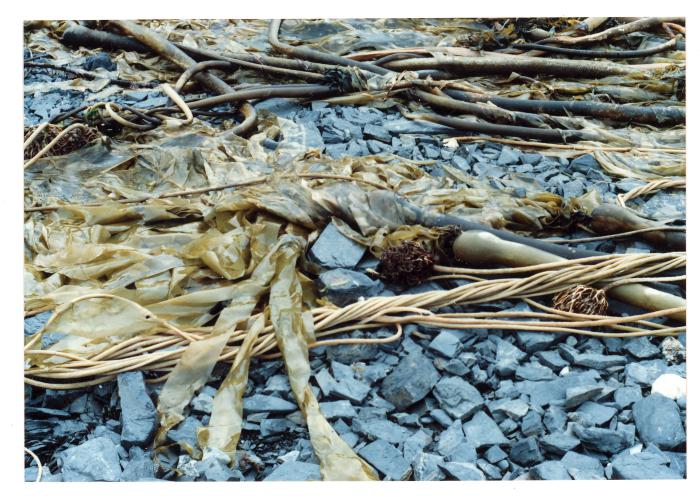Bull Kelp — Nasqulut

Bull kelp (Nereocystis luetkeana) is a variety of seaweed with a long, hollow stem attached to a bulb with trailing leaves. This plant grows abundantly in Kodiak’s nearshore waters and has a one-year life cycle. Microscopic spores emitted in the fall live through the winter to produce new kelp each spring. During the warm months, the plant grows rapidly, forming a sturdy stem up to sixty feet long. In the winter, kelp plants die, and large accumulations wash onto area beaches.
Alutiiq people once used the kelp’s hollow stem as a suction tube. Pieces about two feet long and one inch in diameter were kept in kayaks and used to bail water. The thinner parts of the stem were dried and used for line. The line was soaked in salt water to make it supple and then used to anchor kayaks or as the line for jigging halibut, cod, and rockfish. Bull kelp is also a traditional food. Pickles and relishes are made from the bulb, and the tender stems of small plants are eaten raw. Today, many gardeners mix bull kelp with eelgrass to produce a rich fertilizer.
